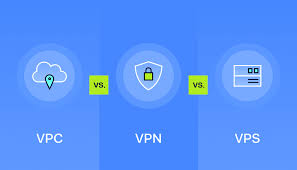-
- Best Practices for Configuring Virtual Private Cloud (VPC) with Your VPS
- Understanding VPC and VPS
- Configuration Steps
- Step 1: Define Your VPC Network
- Step 2: Create the VPC
- Step 3: Configure Subnets
- Step 4: Set Up Route Tables
- Step 5: Configure Security Groups
- Step 6: Launch Your VPS Instances
- Practical Examples
- Best Practices
- Case Studies and Statistics
- Conclusion
Best Practices for Configuring Virtual Private Cloud (VPC) with Your VPS
In today’s digital landscape, the need for secure, scalable, and efficient cloud infrastructure is paramount. Virtual Private Clouds (VPCs) provide a robust solution for businesses looking to enhance their Virtual Private Server (VPS) environments. By configuring a VPC, organizations can isolate their resources, improve security, and optimize performance. This guide will walk you through the best practices for configuring a VPC with your VPS, ensuring that you can leverage the full potential of cloud technology.
Understanding VPC and VPS
A Virtual Private Cloud (VPC) is a private cloud environment hosted within a public cloud infrastructure. It allows users to create isolated networks, control IP address ranges, and configure subnets, routing, and security settings. On the other hand, a Virtual Private Server (VPS) is a virtualized server that mimics a dedicated server within a larger physical server. Combining these two technologies can lead to enhanced security and performance.
Configuration Steps
Step 1: Define Your VPC Network
Begin by defining the network architecture of your VPC. This includes selecting the IP address range and creating subnets.
- Choose an IP address range (e.g., 10.0.0.0/16).
- Create subnets based on your application needs (e.g., public and private subnets).
Step 2: Create the VPC
Using your cloud provider’s console, create the VPC with the defined IP range.
aws ec2 create-vpc --cidr-block 10.0.0.0/16Step 3: Configure Subnets
Next, create subnets within your VPC. Ensure that you allocate sufficient IP addresses for your resources.
aws ec2 create-subnet --vpc-id vpc-12345678 --cidr-block 10.0.1.0/24Step 4: Set Up Route Tables
Configure route tables to control the traffic flow within your VPC.
aws ec2 create-route-table --vpc-id vpc-12345678Step 5: Configure Security Groups
Security groups act as virtual firewalls for your instances. Define inbound and outbound rules to control traffic.
aws ec2 create-security-group --group-name MySecurityGroup --description "My security group" --vpc-id vpc-12345678Step 6: Launch Your VPS Instances
Finally, launch your VPS instances within the configured VPC and assign them to the appropriate subnets and security groups.
aws ec2 run-instances --image-id ami-12345678 --count 1 --instance-type t2.micro --key-name MyKeyPair --security-group-ids sg-12345678 --subnet-id subnet-12345678Practical Examples
Consider a scenario where a company needs to host a web application. By configuring a VPC with a public subnet for the web server and a private subnet for the database server, the company can ensure that the database is not directly accessible from the internet, enhancing security.
Best Practices
- Use multiple Availability Zones (AZs) for high availability.
- Regularly review and update security group rules.
- Implement network ACLs for an additional layer of security.
- Monitor VPC flow logs for traffic analysis and troubleshooting.
- Utilize VPC peering for connecting multiple VPCs securely.
Case Studies and Statistics
According to a study by Gartner, organizations that implement VPCs report a 30% reduction in security incidents. Additionally, a case study from a leading e-commerce platform showed that by migrating to a VPC, they achieved a 40% improvement in application performance due to optimized resource allocation.
Conclusion
Configuring a Virtual Private Cloud (VPC) with your Virtual Private Server (VPS) is a strategic move that can significantly enhance your cloud infrastructure’s security, performance, and scalability. By following the outlined steps and adhering to best practices, you can create a robust environment tailored to your business needs. Remember to continuously monitor and optimize your configuration to adapt to changing requirements and ensure ongoing efficiency.
